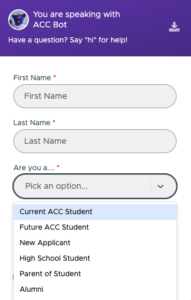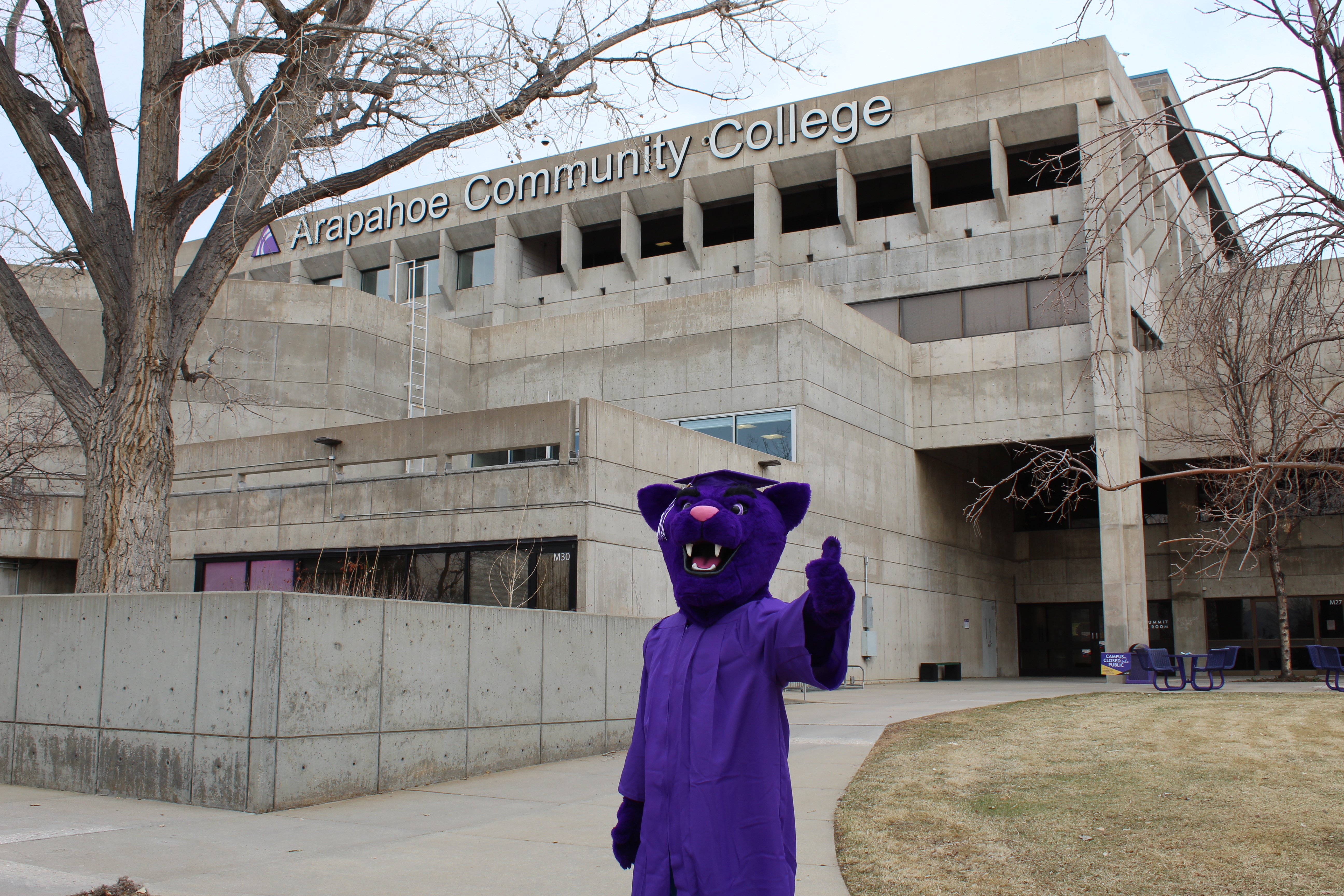When ACC first started the chatbot, it was ungated. What this means is that they didn’t request any information about the person who was asking the question – it was just a straightforward chatbot. However, they quickly realized that if someone was asking a question and they weren’t there to answer it – which they weren’t at 10pm – they needed to find a way to get back in touch. Therefore, they had to collect more user data.
Arapahoe started off by asking the person interacting with the chatbot for their first name, last name, and email address. This has now evolved into identifying whether the person is a prospect, current student, parent/guardian, and so on. This has enabled ACC to best build the pipeline, understand who is using the chatbot most frequently, and then build that funnel pipeline to the CRM for prospects or to their parent/family resources.

Additionally, Arapahoe has added additional contact information requests on different channels of the chatbot, such as asking students for their student ID number on the advising and financial aid page, so that specific questions can be answered in live chat conversations.
Kayce explains, “Now, I have a new funnel pipeline. I can collect prospects and load them into my CRM. I can also collect parent/guardian and family information and then email them and direct them to our parent/family website.”
Want to hear more? Sign up to watch it on-demand here.



